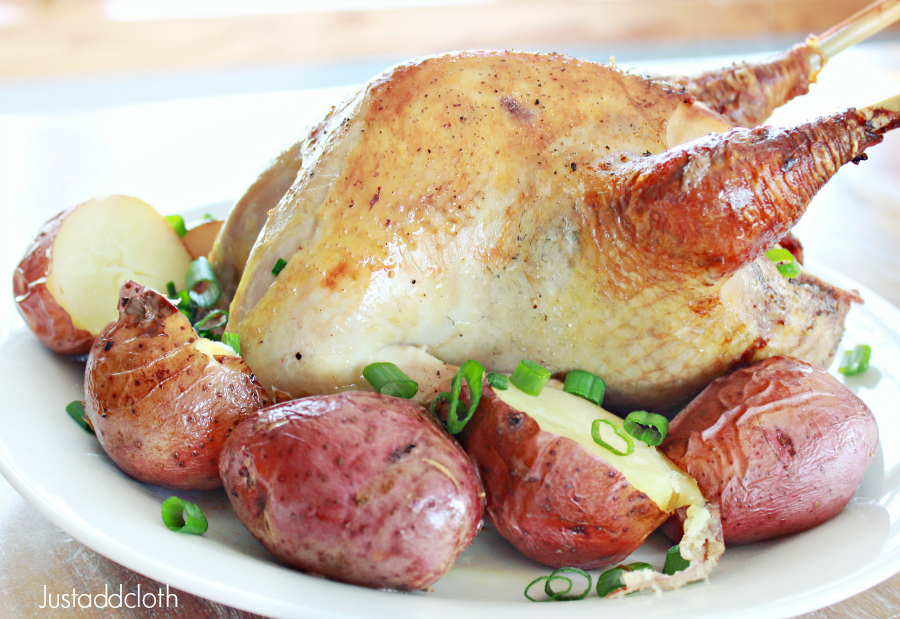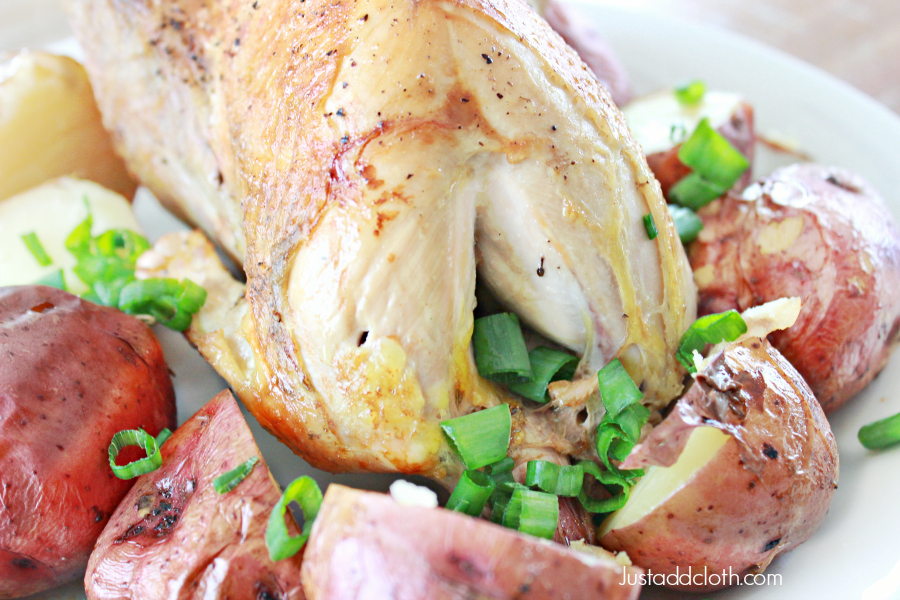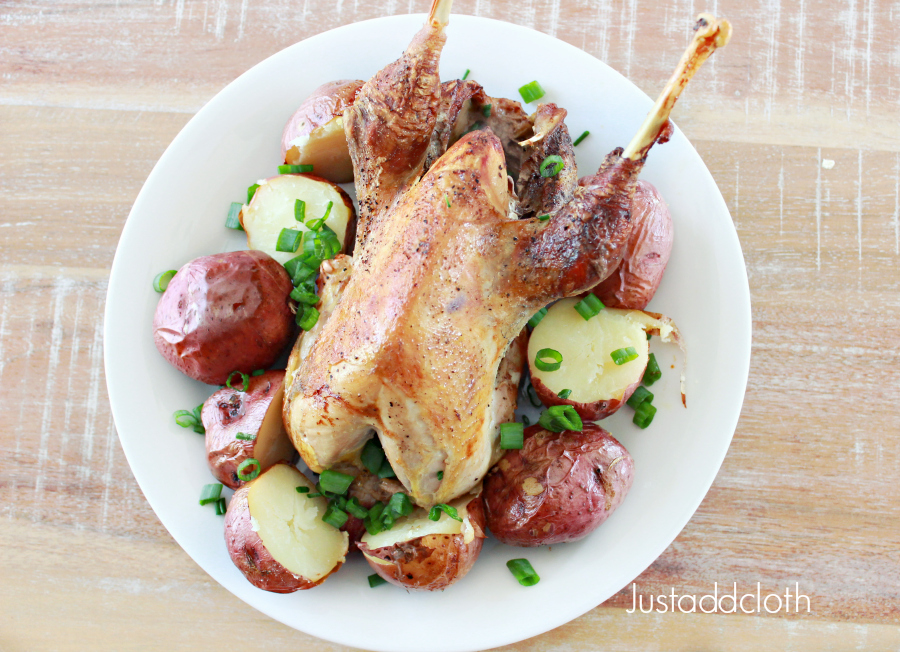
Let’s roast a guinea………..saay whaaaat? If you have read here before, you might already know I have raised guinea fowl on occasion. The thing with raising animals on a homestead is….. sometimes you slaughter and eat them. I’ll refrain from telling you about the slaughter. There are plenty of resources on YouTube for that. Cooking up a guinea is basically the same as cooking up a pheasant. Or any other wild game bird. The meat is a little darker and tougher, but it generally tastes like your regular poultry. The bigger different is in texture. The chicken you buy at the store has been siting on its butt or in a pen and not very active. This makes for a rather crappy life for the chicken, but it also makes the meat more tender. Activity makes muscles firmer. We all know that or we wouldn’t be busting our humps at the gym.
So, your homegrown bird who spent her life running around your pasture and eating bugs and living her best life, is also going to be a heck of a lot tougher than a store bought bird. So if that is going to bother you, be sure to give the thawed out bird a little massage while raw. Massaging the meat will loosen up the ligaments and tendons a bit. You can also soak it overnight in an acid solution, AKA brine the bird. The acid in a vinegar-y or lemon-y brines will loosen up connective tissue and tame down any gamy flavors.
I am going to suggest a buttermilk soak. Yes, just like the soak for your fried chicken. I used to gasp in horror at my friend’s house because every time I opened her fridge, it had a bunch of large bowls filled with squirrel legs soaking in buttermilk. I was a city slicker, see, and the idea of eating squirrel was akin to eating sewer rats as far as I was concerned. Now of course, I know better and understand a squirrel is not that much different than rabbit, and rabbit is a spendy dish at most restaurants. Buttermilk is an acidic solution and can also reduce gaminess. It is a popular tenderizing solution.

The key to a really good bird is seasoning it! I like to place a couple cloves of smashed garlic in the cavity, along with a half a fresh lemon. Then I rub a lemon pepper seasoning and dried minced onions all over the outside. I love the lemon pepper blend at Penzey’s spices.
You can also make your own lemon pepper with equal parts:
- Course Sea Salt
- Garlic granules
- Fresh ground black pepper
- Lemon zest
- Course ground Dried Onions
Directions:
Pull your bird out of your brine or tenderizing solution. Pat it dry.
Place the bird BREAST DOWN in a roasting pan. I actually use an enameled lasagna pan. Placing the bird breast down will keep the white meat moist and allow the bits of meat on the back ribs get nice and charred.
For a guinea, we have a much shorter cooking time. Guinea fowl are usually only about 1-2 pounds compared to a six pound chicken. You don’t want to overcook it. I actually did overcook the one pictured here a bit. We tend to like the legs a bit crispy.

Anyway, breast side down, and rub it down with about one teaspoon each of the salt, garlic, black pepper, lemon zest, and minced onions. Pack about 10 red potatoes around the sides of the bird, with a half cup of water poured in the bottom of the pan. Cover it to prevent dry out. Pop it in the oven uncovered at 350*F on an upper rack for about an hour. If your do NOT cook it packed in potatoes, you’ll want to reduce the cook time to about 35 minutes. If I am uncertain whether or not it is done, I will stick a thermometer in the thigh. Over all though, a guinea is small enough that if it seems done, it is done. It is not big enough for one part to be done and one part to still be raw.
Offering up guinea fowl at your dinner party will seem fancy, like other game birds. They can be quite spendy at the grocery store. After raising them myself, I understand why. Guinea fowl can be rather time consuming if you want to keep your flock alive and healthy.

